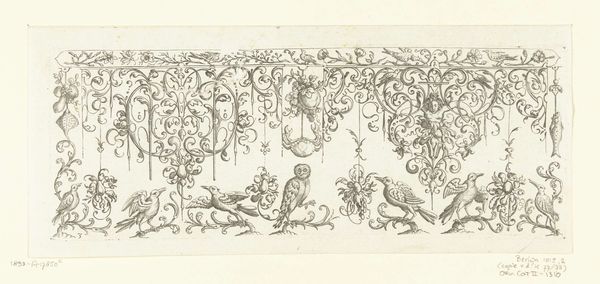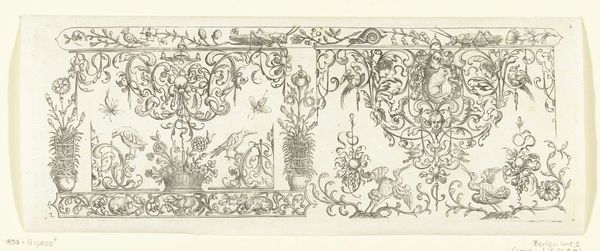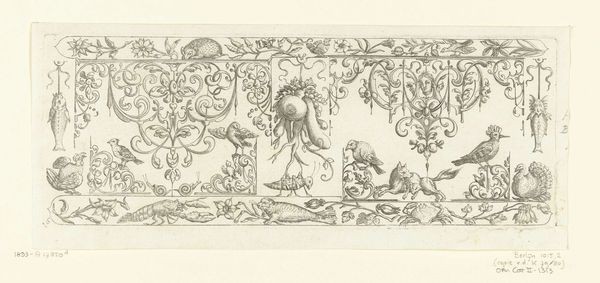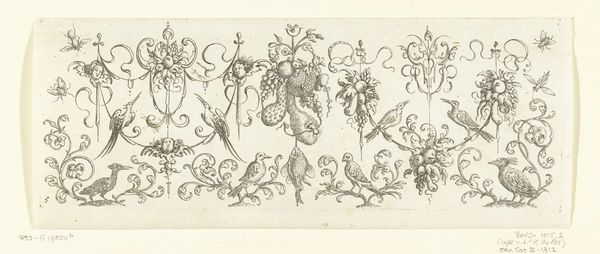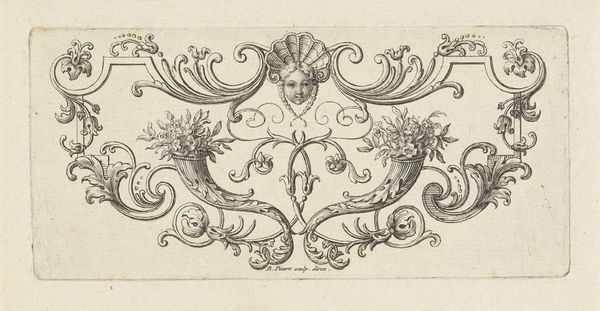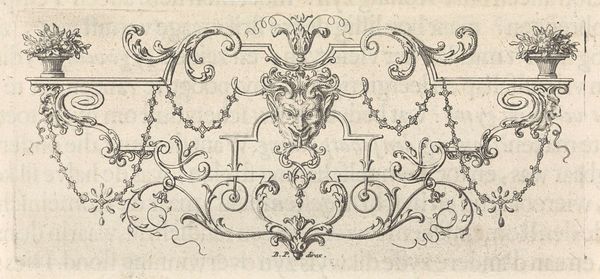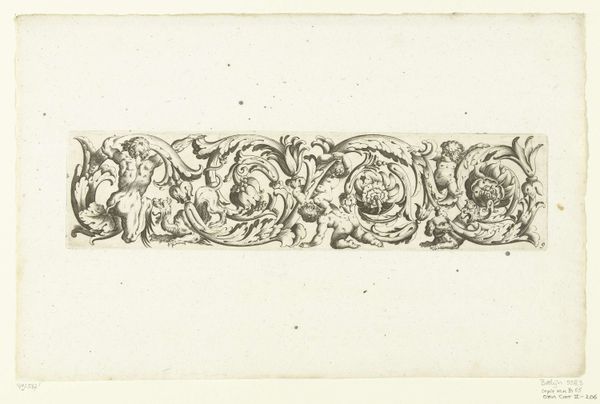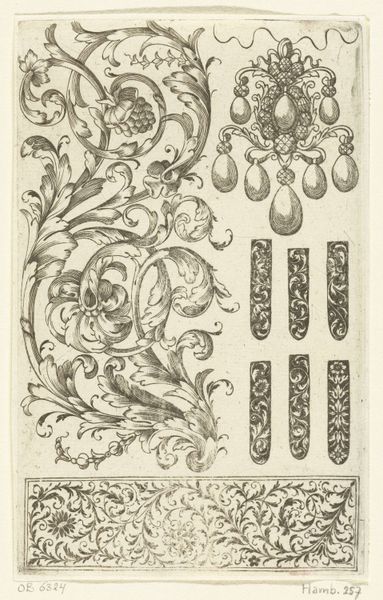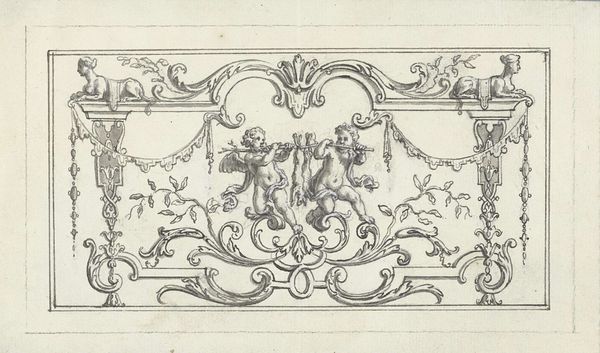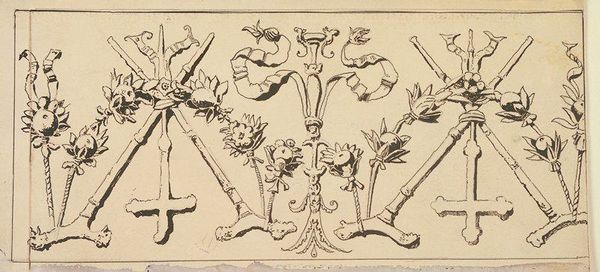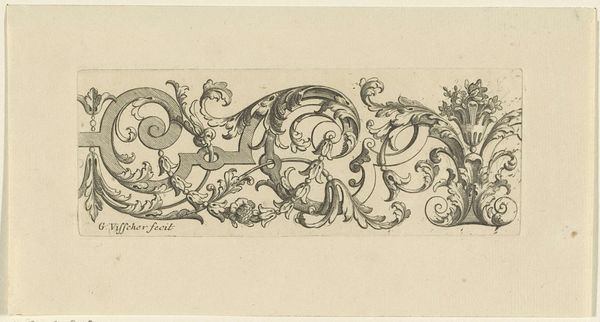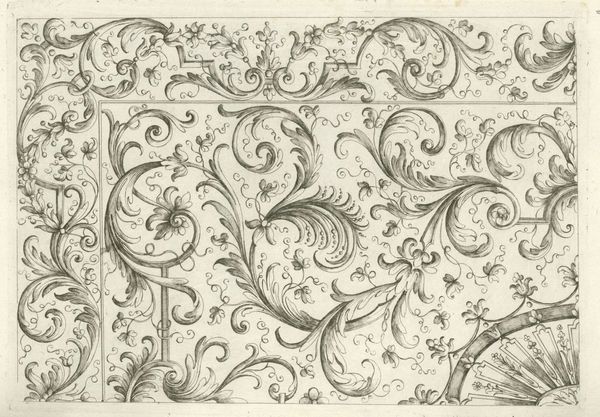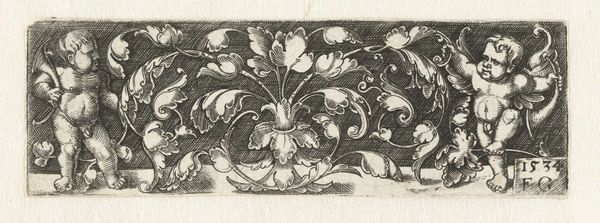
drawing, ink
#
drawing
#
baroque
#
line art
#
ink line art
#
ink
#
thin linework
#
line
#
pen work
Dimensions: height 78 mm, width 210 mm
Copyright: Rijks Museum: Open Domain
Curator: I’m quite drawn to this delicately rendered piece from the Rijksmuseum’s collection, an ink drawing titled "Randdecoratie met bovenaan twee schildpadden," or “Border Decoration with Two Turtles at the Top,” created sometime after 1611 by Henri Le Roy. Editor: My first thought is how wonderfully strange this all is – a very curious assembly of animals amidst ornate scrollwork! There's a fascinating juxtaposition between the organic forms of nature and those meticulously crafted lines of artifice. What was this meant to decorate, do you imagine? Curator: These borders are particularly interesting; one could apply them to larger works such as plasterwork for walls and ceilings. But also to pottery and smaller everyday items such as mirrors. It gives me this feeling of nature overflowing, yet so meticulously controlled. Like a carefully manicured wilderness, capturing this almost Baroque sensibility, even within such fine lines. What materials might've been used, though? Editor: Well, you're spot on with the 'fine lines.' It's largely thin linework. The creation undoubtedly involved specific types of quill pens, perhaps goose or swan feathers, meticulously chosen for their fineness. The ink composition would matter just as much. Did the artist prepare the ink, using something like oak gall, for those deep blacks or were those washes from different mixes? Did the artist experiment with the thickness and smoothness? Curator: Knowing Le Roy's background and other extant works, I believe he had assistants preparing and testing different inks; I sense he sought both precision and dynamism in the shading, adding a kind of playful quality against such precise patterns. The creatures amidst it are very symbolic, I would say; these details suggest mortality but also vitality, rebirth perhaps. Editor: It strikes me that choosing creatures that scuttle and swim as ornamentation pushes at the boundaries of design. How accessible were these depictions for consumption and production, given what the natural sciences understood at the time? And furthermore, what did a "design" signify for consumption in the market then? What do you see as the work's deeper implications? Curator: A kind of harmony – finding beauty in the everyday. Le Roy seems to capture this world on the brink of scientific revolution while retaining a very personal artistic voice. I think its allure is precisely that tension. Editor: Yes, exactly. Seeing this drawing up close truly makes one think about art’s connection to the commerce, craftsmanship, and curiosity in observing the natural world at that time.
Comments
No comments
Be the first to comment and join the conversation on the ultimate creative platform.
